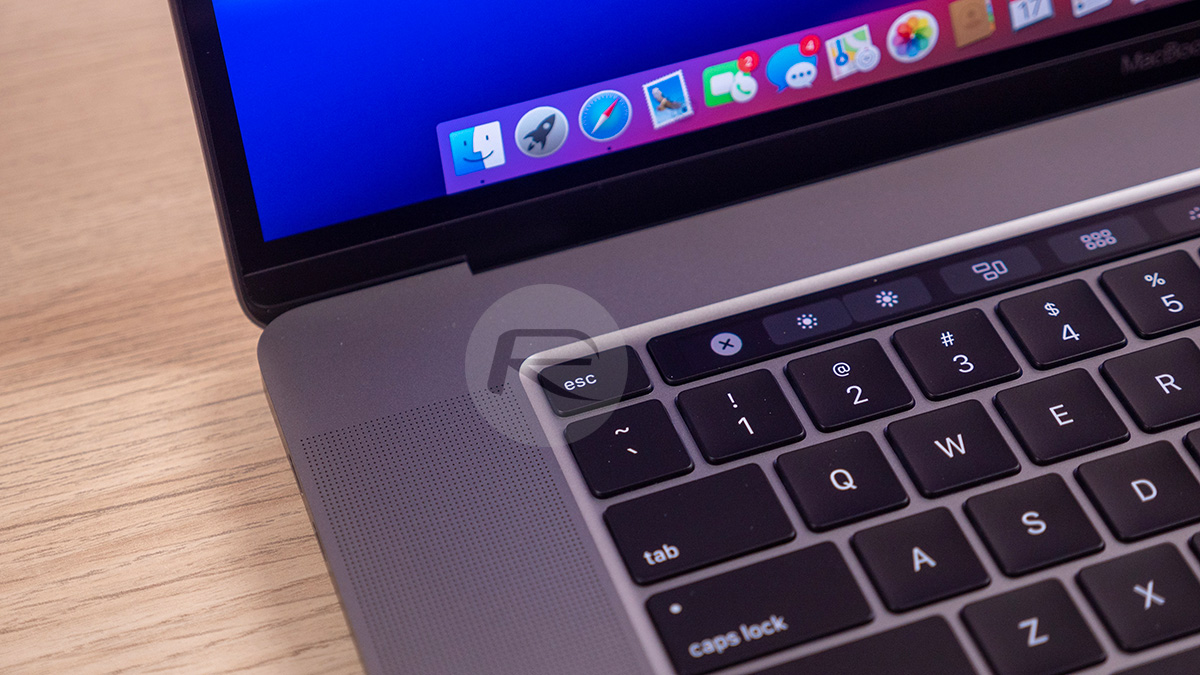Apple has had a tough history in terms of keyboards in recent years. Its butterfly keyboards will go down as one of the biggest design mistakes the company has made after they failed with alarming regularity. Now the company has a new patent in the works that might just go some way to fixing things properly – by making keycaps out of glass.
The patent, spotted by Tom’s Guide and currently working its way through the US Patent and Trademark Office (USPTO), shows glass keycaps that would allow for thin keyboards without negatively impacting their durability.

A pleasing exterior appearance of an electronic device is often difficult to pair with the market demand for advanced functionality, improved durability, key definition, and reduced thickness and weight. Some aesthetically pleasing materials may not be sufficiently durable to include in a device housing or other components, and other aesthetically pleasing materials can interfere with the advanced functionality of the electronic device. Some aesthetic materials are brittle, rigid, or difficult to manufacture into keycaps with desired surface features.
Apple’s patent also points to a potential fix for another issue that users of its keyboards have noted – text rubbing off the keycaps. Apple apparently plans to put characters on the inside of the key, with light shining through to illuminate them. That would prevent them from being rubbed off because the user never actually touches them.
One aspect of the present disclosure relates to a keycap for a keyboard that includes a key body comprising a top external surface. The key body can comprise a transparent body having a bottom surface, a light-blocking material attached to the bottom surface of the transparent body, with the light-blocking material defining a glyph shape, and a carrier body configured to support the transparent body and the light-blocking material. The top external surface can include at least two edges and a center, with the at least two edges being raised relative to the center.
In some cases, the transparent body can comprise a glass material, the carrier body can comprise a polymer material, and the light-blocking material can comprise an opaque layer positioned between the glass material and the polymer material. The transparent body can comprise a transparent polymer material, and the top external surface can also comprise concave curvature. That concave curvature can be substantially cylindrically or spherically concave.

But as always, it’s important to remember that Apple applies and gains patents for all kinds of technologies. Not all of them ever bear fruit, however, and this doesn’t mean we’ll be typing on glass keyboards anytime soon. Assuming you ignore the ones we see on our iPhone and iPad screens, of course.
You may also like to check out:
- Download iOS 14 Beta 1 IPSW Links And Install On iPhone 11, Pro, XS Max, X, XR, 8, 7, Plus, 6s, iPad, iPod [Tutorial]
- iOS 14 Beta 1 Download IPSW Links, OTA Profile And iPadOS 14 Beta 1 For iPhone And iPad
- iOS 14 Beta 1 Profile File Download Without Dev Account, Here’s How
- iOS 14 Beta 2 Profile Download Release Date Expectation
- Download: iOS 13.6 Beta 3 IPSW Links, OTA Profile File, Beta 3 Of iPadOS 13.6 Out Now
- iOS 13.5.1 Downgrade No Longer Possible After Apple Stops Signing iOS 13.5 Jailbreak Firmware
- Jailbreak iOS 13.5.1 Using Checkra1n, Here’s How [Video Tutorial]
- Jailbreak iOS 13.5 On iPhone 11, Pro Max, SE, iPad Pro, More Using Unc0ver 5.0.0 [Tutorial]
- Download: iOS 13.5.1 IPSW Links, OTA Update Released For iPhone And iPad
- Jailbreak iOS 13.5 Without Or No Computer, Here’s How
- Apple Watch ECG App Hack: Enable Outside US In Unsupported Country On Series 5 & 4 Without Jailbreak
You can follow us on Twitter, or Instagram, and even like our Facebook page to keep yourself updated on all the latest from Microsoft, Google, Apple, and the Web.

